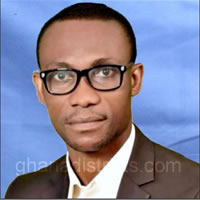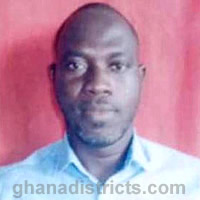VULNERABILITY ANALYSIS: POVERTY, INEQUALITY AND SOCIAL PROTECTION
The Upper West Akim District has identified Persons with Disability (PWD), the Aged, Persons Living with HIV/AIDS (PLHIV/AIDS), Orphans & Vulnerable Children, Peasant Farmers and Albinos as the most vulnerable in the District.
The Aged
The Aged constitutes 5.6% (4,870) of the District population. Males constitute 40.4% while females constitute the remaining 59.6%. Most of the aged (79.4%) reside in the rural areas.
The aged population is of much concern because it has implications for health care and social policy. Thus there is the need to make health care accessible and affordable to the aged at all times. The Aged has the past years been enrolled onto PWD and free NHIS interventions by the Department of Social Welfare and Community Development. An exercise under the Department is currently classifying them separately for area specific interventions.
The neglect of the Aged by relatives or family members is a growing issue of concern in the District. There is the need to inculcate savings and investment habit in the people so that they would be able to cater for themselves at old age.
Peasant Farmers
The agricultural sector is the main backbone of the District; employing a majority of the economically active population who are peasant farmers and depend on unreliable rainfall patterns. The vulnerability of peasant farmers is been worsened by difficult land tenure systems, poor market prices for farm inputs, high cost of farm inputs, inadequate agriculture extension services and lack of storage facilities that represent dominant shocks affecting incomes, availability of food and wealth accumulation. Data from the Department of Agriculture indicates that 1,352 farmers have lost 2,258acres of land to sand wining due to poor land tenure system or arrangement.
Orphans and Vulnerable Children
The 2010 PHC indicates that the District had 40.7% of its population are between the ages of 0-14 years. This means the District has a lot of children who are dependents. Most of these children become vulnerable because of the District’s high birth rate and inadequate parental control and responsiveness. Cases of teenage pregnancy, child custody and maintenance are the major issues most often reported. The Social Welfare Department of the Assembly will be strengthened to design and implement programmes such as the community sensitization on social welfare issues, regular home visits, provision of educational and medical supports to Orphans and vulnerable children, among others to address these problems.
Persons with Disability (PWD)
Data from 2010 PHC report shows that the district has a population of 2,926 with disabilities. This represents 3.4% of the entire district population. The distribution of persons with disabilities by types of disability indicates that 37.7%, have sight impairment out of the population with disabilities, followed by physical disability 35.2%. This makes sight and physical disability the most common types of disability in the district. Comparatively, there is a little difference between persons with speech disability and persons with hearing disability. People with speech disability represent 19.6% compared to 19.2% of persons with hearing disability. This difference could be due to the fact that hearing and speech disabilities are closely related. Though the disability population is not so high in the district, there is no established institution that support the needs of these PWDs aside the District Assembly. The District Assembly through the Department of Social Welfare and Community Development have supported not more than 15% of the disability population through the disbursement of the PWDs District Assembly Disability Fund which is to enable them to engage in economic/income generating activities. The District Assembly needs to collaborate with more development partners and philanthropists to provide supports that meet the needs of these PWDs
Persons Living with HIV/AIDS (PLHIV/AIDS)
There are people living with HIV and AIDS in the District who are also vulnerable. Unfortunately, the District does not have a full functioning Anti Retro-Viral Center that will offer full services as well as monitor the welfare of Persons with HIV/AIDS. The establishment of an ART Center coupled with advocacy on stigma against PLHIV in the District will encourage the formation of an association by PLHIV to access support from government and other donors. The Health Directorate has however established an ART Unit at the Antenatal Care Unit of the health Center to offer the needed services to PLHIV within the District. Inadequate office and consultation accommodation at the Health Center is a great challenge that militates against access to HIV/AIDS services in a confidential state. This has made it difficult for PLHIV to access health services regularly and free from fear of stigma. The Health Directorate as a result is unable to keep accurate data on HIV/AIDS cases in the District as PLHIV opt to access services from outside the District for fear of stigma.
Albinos
The Department of Social Welfare and Community Development discovered albinos within the District. Small in number with severe disability features like poor visibility and hearing, this population remains conservative due to stigma but manages to practice peasant farming. They are however beneficiaries under PWD, LEAP and free NHIS interventions.
Natural and Man-Made Disasters
Disaster management in the District is under the jurisdiction of the National Disaster Management Organization (NADMO) and with a high level of support from the District Assembly. The Organization has been involved in carrying out activities such as education, clean-up exercises, provision of relief items, formation and training of Disaster Volunteer Groups (DVGs) aimed at reducing vulnerability and impact of this disasters.
Hazards or disasters identified in the district include pest and insect infestation, disease epidemics (cholera), lightening, rainstorms, windstorms, bushfires and domestic fires. Every year, the district is plagued with these hazards which affect some proportion of the population negatively hence resulting into disaster.
NADMO is however challenged logistically and financially hence making it very difficult to carry out their core mandate. To address this, financial and human resources would be mobilized both internally and externally to reduce possible future disasters.
Disability can be defined as any physical, mental and sensory condition that restricts a person’s movements, senses or activities. The term disability is used to refer to malformations that are severe enough to interfere with, or obviate normal day-to-day living activities. According to the UN Convention on the Rights of Persons with Disabilities, persons with disabilities include those who have substantial long-term physical, mental, intellectual or sensory impairments which in interaction with various barriers, may hinder their full and effective participation in society on an equal basis with others. It is important to note that disabilities can be permanent, temporary, or episodic. They can affect people from birth, or could be acquired later in life through injury or illness.
The World Health Organization (WHO) estimates that approximately 650 million people, or ten percent of the world’s population, have a disability. In Ghana, the disabled welfare groups estimate that ten percent of Ghanaians have some form of physical or sensory impairment. In most developing countries including Ghana, persons with disabilities constitute an impoverished marginalized group, characterized by lack of access to public health, education, and other social services that would ideally support and protect people with disabilities.
To have a clear understanding of the issues relating to persons with disabilities in the Upper West Akim District, data was collected on persons with disabilities in the 2010 PHC. Chapter six deals with the distribution of the population with disability, type of disability, persons with disability by type of locality, distribution of disability and economic activity and persons with disability, education and literacy.
Population with Disability
Table 6.1 shows that there are 2,926 persons in the district who had some form of disabilities, and this represents about 3.4 percent of the total population in the district. There is a slight difference between the numbers of persons with disability with regards to sex. There are 1,424 males representing (3.3%) of the male population in the district with a disability as compared to 1,502 (3.4%) of the female population in the district with disabilities.
Types of Disability
Figure 6.2 shows the distribution of persons with disabilities by types of disability in the Upper West Akim District. A total of 1,104 (37.7%) have sight impairment out of the population with disabilities, followed by physical disability 1,031 (35.2%). This makes sight and physical disability the most common types of disability in the district. Comparatively, there is a little difference between persons with speech disability and persons with hearing disability. People with speech disability make a total of 573 (19.6%) compared to 561 (19.2%) of persons with hearing disability. This difference could be due to the fact that hearing and speech disabilities are closely related. Figure 6.2 further shows that a total of 646 (22.1%) persons have intellectual disability making it the third most common type of disability in the district.
Population with Disability and Type of Locality
Table 6.2 gives a comparison of data on the distribution of the population with disability by type of locality in the Upper West Akim District. There are 2,318 persons in the rural areas with a disability compared to 608 persons in the urban areas. The most common types of disability in the urban areas are physical disability (31.6%) and sight impairment (30.9%). On the other hand, the percentage of persons with sight disability is higher in the rural areas (39.5%) compared to the urban areas (30.9%). Also the proportion of persons with emotional disability is higher in the rural areas (20.2%) than in urban areas (12.2%).
Disability and Economic Activity Status
Table 6.3 shows persons 15 years and older with disability by economic activity status and sex. The data shows that 3.8 percent of the employed population in the Upper West Akim District are disabled and the unemployed population with disability is 3.5 per cent. The economically not active persons with disability are 7.1 percent which is higher for females (7.4%) than for males (6.8%). The proportion of the employed persons with disability is higher for males (3.9%) than for females (3.6%). Employment is highest for persons with sight disability (40.1%) followed by persons with physical disability (32.3%) and hearing disability (17.4%). Those with speech disability are least employed (16.2%).
For the sexes, the proportion with sight disability employed is 40.3 percent for females and 39.9 percent for males which imply that sight disability is no impediment to getting a job. Physical disability is second and is 34.4 percent for females and 30.3 per cent for males.
Disability, Education and Literacy
Table 6.4 presents the population three years and older by sex, disability type and level of education in the district. About forty- six (46.6%) of persons with disability have never attended school. However, with respect to persons with disability with some form of education, (5.0%) have secondary education. Among the types of disabilities, approximately forty-seven percent (46.8%) of persons with sight disability have never attended school, followed by those with physical disability (47.4%). About six percent (6.7%) of persons with sight disability have attained post graduate (SHS and Higher) making it the only type of disability with that level of education. In relation to sex, about forty percent (39.1%) of males with physical disability have never attended school compared to almost sixty percent (60.9%) of females with sight disability who have never attended school. The highest level of education for males with disability is SHS and Higher certificates with approximately nine percent (9.2%) of persons with sight disability attaining that level of education. However, females with disability have the highest level of education with (39.3%) having basic education in the district.
Date Created : 4/12/2023 6:49:40 AM






 facebook
facebook twitter
twitter Youtube
Youtube TOLL FREE 0800 430 430
TOLL FREE 0800 430 430 +233 593 831 280
+233 593 831 280 GPS: GE-231-4383
GPS: GE-231-4383 info@ghanadistricts.com
info@ghanadistricts.com Box GP1044, Accra, Ghana
Box GP1044, Accra, Ghana